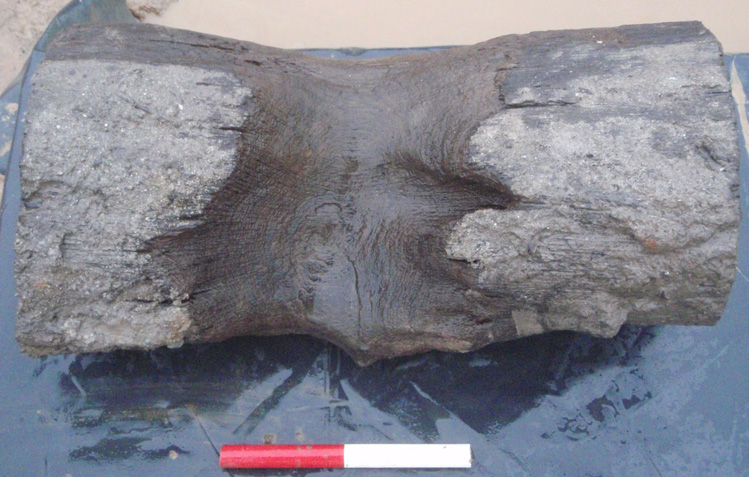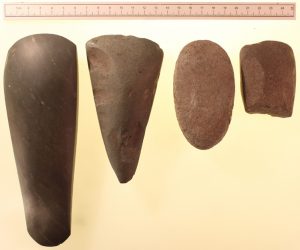In the lowest part of the palaeochannel at Stainton West was an organic-rich layer containing large quantities of waterlogged wood. A wide variety of different species of tree were represented including (in order of greatest frequency) hazel, elm, oak, hawthorn-type, alder and blackthorn-type. Radiocarbon assay of samples of the organic material at this level show that the woody layer (Mesolithic organic deposit) accumulated during the Late Mesolithic period. Some pieces of this wood had been altered by beavers, bearing the scars left by, at times, voracious gnawing.

The wood within the channel also had an uneven distribution, with some areas being almost devoid of wood and others containing populous clusters. One such cluster at the south of the palaeochannel, is roughly circular in shape and comprises a tangled mass of branch wood surrounding a large tree trunk. This is presently interpreted as being the remains of a beaver lodge. Further to the north, downstream in the channel large boughs span the channel and may have been used by the beavers to construct dams. Beavers can have a dramatic effect on their environment coppicing woods to create clearings, ponding streams with their dams and creating artificial islands with their lodges. Human hunter-fishers may have been attracted to such modified environments, perhaps explaining the evidence for human activity at this level within the channel at Stainton West.

